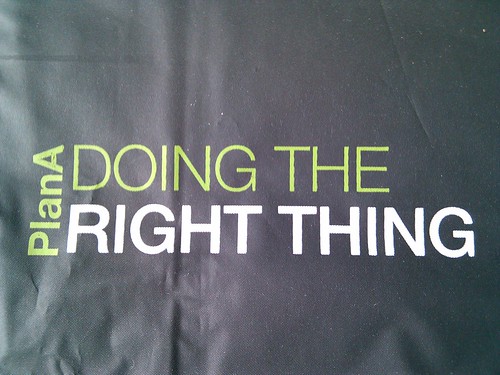 Here's a question to anyone who has ever been a patient in the health care world: Are you paying for a service, or for an outcome?
Here's a question to anyone who has ever been a patient in the health care world: Are you paying for a service, or for an outcome?
And to all of you clinicians out there, I ask a similar question: Are you charging for a service, for your time, or for an outcome?
I would suggest that patients seek out the guidance of clinicians to attain an outcome.They are searching for a game plan to provide a tangible outcome of some form or another. That tangible outcome may have multiple steps, but it is still a specific outcome.
If there is a patient population that demands an outcome - and promptly - it is the athletic population. It becomes even more important to those athletes who make their living from sport. Health care in general stands to learn a lot from the ways of the injured athlete.
 Today is Independence Day in the United States. For the first time since I moved to Austin, I went to Auditorium Shores this evening to watch the fireworks and listen to the symphony. It's not that I haven't witnessed fireworks here before - I just haven't taken part in the traditional Austin downtown celebration - until today. Cool stuff.
Today is Independence Day in the United States. For the first time since I moved to Austin, I went to Auditorium Shores this evening to watch the fireworks and listen to the symphony. It's not that I haven't witnessed fireworks here before - I just haven't taken part in the traditional Austin downtown celebration - until today. Cool stuff.
Welcome to a special July 4th edition of the Rhubarb Report. It would only be appropriate on a day like today to find some patriotic rhubarb and to share a few thoughts on what makes this country what it is. We live in a country founded on freedom, and there are plenty of powers-that-be that would gladly tear it asunder if we let them do so.
So sit back, relax, raise a toast to the United States, and enjoy the latest episode of the Rhubarb Report.
 If you listen to the patient, they will tell you what is wrong.
If you listen to the patient, they will tell you what is wrong.
This is a phrase I like to use when I am teaching clinical reasoning and decision-making. Listen to the patient. The patient has one witness, the clinician has none. Our task as clinicians is to ask the right questions and to make sense of the truths offered by the patient and their particular clinical presentation.
Strangely enough, dealing with tech support is no different.
Oh, if only they had listened to me on the first call, let alone the 7th.
 Quiz time: What happens when you add one bad bill to one good bill? Answer: California AB 1000.
Quiz time: What happens when you add one bad bill to one good bill? Answer: California AB 1000.
AB 1000 is Assembly Bill 1000. It began as two separate bills: AB 1000, a patient access bill sponsored by the California Physical Therapy Association, and AB 1003, a bill sponsored by the California Medical Association and the California Orthopedic Association. The latter would allow for any professional corporation listed in the Moscone Knox Act (i.e. physicians) to employ all professions included in the Business and Professions Code (i.e. physical therapists).
As it stands right now, the State of California Legislative Counsel has stated that it is illegal for physical therapists to be employed by any professional corporation except for those owned by physical therapists and naturopaths.
The net result of this legislative wrangling and hoo-haa is a classic example of short-sightedness and attempting to grab the scraps of patient access as they fall from the table. It reeks of permission-based professional "judgment", and it could end up being a long-term nightmare for both patients and physical therapists in the state of California.
 It is a brave new world out there if you are a physical therapist looking for a professional vision statement.
It is a brave new world out there if you are a physical therapist looking for a professional vision statement.
In retrospect, the Vision 2020 statement had its good points. I never did think that it created a solid enough brand statement. But it did envision physical therapists as practitioners of choice, and it put movement, function, and health at the forefront. Those are all good things, right?
How far we actually progressed towards that vision can be hotly debated, but that isn't the issue at hand right now.
This week, the APTA House Of Delegates approved a brand new vision statement. If the last one had you wondering, then this is one for the ages.
 The litmus test of patient access to physical therapy is quite simple. Ask the patient.
The litmus test of patient access to physical therapy is quite simple. Ask the patient.
Pose the question: in your state, irrespective of payer guidelines, do you have the ability to freely seek evaluation and treatment from a physical therapist? Go ahead, I dare you. I double dog dare you. Ask.
In 33 states, the answer will be a distinct "no". Just 17 states will give you a "yes". We have 50 shades of patient access, 33 of which are permission-based. Each state is different.
The physical therapy profession has conjured up a variety of phrases to describe the many shades of patient access in the United States. “Unfettered”. “Restricted”. And all sorts of variations.
But ask a patient, and there are just two shades - yes and no. The haves, and the have-nots. So why must we make these silly claims? And just who does it benefit?
 We see the trends taking place throughout the physical therapy world with countless orthopedic conditions. Third party payers are not approving as many visits for physical therapy. Reimbursements are decreasing. Clinicians and patients alike are frustrated.
We see the trends taking place throughout the physical therapy world with countless orthopedic conditions. Third party payers are not approving as many visits for physical therapy. Reimbursements are decreasing. Clinicians and patients alike are frustrated.
One example of this is the rehabilitation process post-anterior cruciate ligament (ACL) reconstruction. There are oftentimes many "protocols" utilized, benchmarks to measure, milestones to make, and function to regain. Traditional approaches have been relatively time- and visit-intensive in the past.
What becomes more and more evident is the growing rift that exists between stakeholders. Payers want to minimize costs. Patients want to return to activity quickly. Clinicians want to be reimbursed reasonably while providing effective care. These stakeholders don't always see eye-to-eye.
Fortunately, this problem reduces itself nicely to some simple solutions.
 "Running Injuries: Etiology And Recovery- Based Treatment" (co-author Bridget Clark, PT) appears in the third edition and fourth editions of "Clinical Orthopaedic Rehabilitation: A Team Approach" by Charles Giangarra, MD and Robert C. Manske, PT.
"Running Injuries: Etiology And Recovery- Based Treatment" (co-author Bridget Clark, PT) appears in the third edition and fourth editions of "Clinical Orthopaedic Rehabilitation: A Team Approach" by Charles Giangarra, MD and Robert C. Manske, PT.
 Allan Besselink, PT, DPT, Ph.D., Dip.MDT has a unique voice in the world of sports, education, and health care. Read more about Allan here.
Allan Besselink, PT, DPT, Ph.D., Dip.MDT has a unique voice in the world of sports, education, and health care. Read more about Allan here.
 Top 5 finalist in three categories: "Best Overall Blog", "Best PT Blog" and "Best Advocacy Blog".
Top 5 finalist in three categories: "Best Overall Blog", "Best PT Blog" and "Best Advocacy Blog".